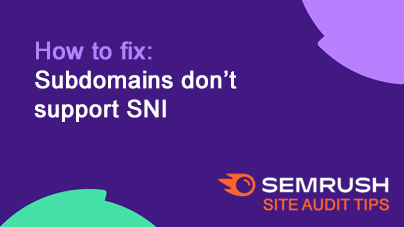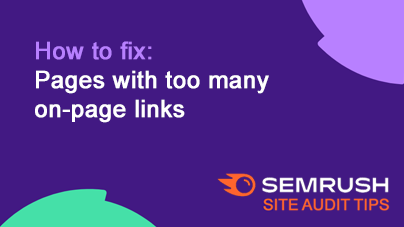
How to fix: Links on HTTPS pages leading to HTTP page
BlogIssue: Links on HTTPS pages that point to HTTP pages can confuse search engines about which version to prioritize and may lead to mixed content issues, affecting SEO and security.
Fix: Replace all HTTP links with their HTTPS versions.
How…

How to fix: HTTP URLs in sitemap.xml for HTTPS site
BlogIssue: If your sitemap.xml contains HTTP URLs for a website that uses HTTPS, it can confuse search engines, leading to incomplete or inefficient crawling of your site.
Fix: Update your sitemap.xml to ensure all URLs use HTTPS.
How to Fix…

How to fix: Homepage does not use HTTPS encryption
BlogIssue: If your homepage doesn’t use HTTPS, it’s less secure and may rank lower in search results because Google prioritizes secure websites.
Fix: Switch your homepage (and entire website) to HTTPS by installing an SSL certificate.
How…

How to fix: Subdomains don’t support SNI
BlogIssue: If your web server doesn’t support Server Name Indication (SNI), it may be unable to securely serve multiple subdomains on a single IP address, affecting security and user trust.
Fix: Verify that your server supports SNI to handle…

How to fix: Sitemap.xml not found
BlogIssue: Without a sitemap.xml file, search engines can’t easily find and index all the URLs on your site, potentially missing important pages and updates.
Fix: Create a sitemap.xml file, upload it to your website, and notify search engines…

How to fix: Pages with too many on-page links
BlogIssue: Pages with over 3,000 links can look spammy to search engines and harm your rankings. It also negatively impacts user experience by overwhelming visitors.
Fix: Remove unnecessary links and keep the number of on-page links manageable.
How…

How to fix: Internal links containing nofollow attribute
BlogSo, what's the issue?
Using rel="nofollow" on internal links prevents search engines from following these links, blocking the flow of SEO value (link juice) across your site. This can cause valuable pages to be overlooked by crawlers.
Here's…

How to fix: Broken external links
BlogIssue: Broken external links direct users to non-existent webpages, hurting user experience and potentially lowering your search engine rankings by signaling poor site maintenance.
Fix: Check all reported broken links. Remove or replace links…

How to fix: Pages containing frames
BlogIssue: <frame> tags make it hard for search engines to index the content within them, which can prevent your pages from appearing in search results. Frames also provide a poor user experience.
Fix: Replace <frame> tags with modern…

How to fix: Pages without doctype declared
BlogIssue: Without a <!Doctype> declaration, browsers don’t know which version of HTML your page uses. This can cause layout issues, slow load times, and a poor user experience.
Fix: Add a <!Doctype> declaration at the very top…